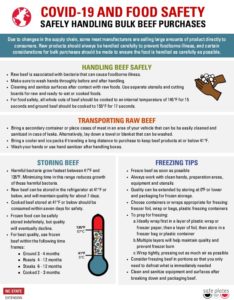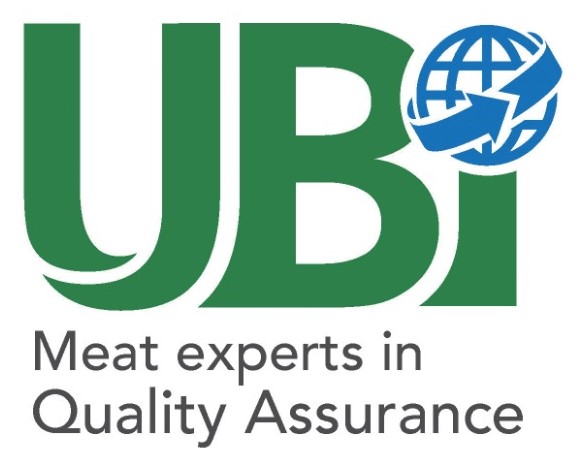COVID-19 AND FOOD SAFETY SAFELY HANDLING BULK BEEF PURCHASES
Due to changes in the supply chain, some meat manufacturers are selling large amounts of product directly to consumers. Raw products should always be handled carefully to prevent foodborne illness, and certain considerations for bulk purchases should be made to ensure the food is handled as carefully as possible.
Download here the flyer: SAFELY HANDLING BULK BEEF PURCHASES

HANDLING BEEF SAFELY
- Raw beef is associated with bacteria that can cause foodborne illness.
- Make sure to wash hands throughly before and after handling.
- Cleaning and sanitize surfaces after contact with raw foods. Use separate utensils and cutting boards for raw and ready-to-eat or cooked foods.
- For food safety, all whole cuts of beef should be cooked to an internal temperature of 145°F for 15 seconds and ground beef should be cooked to 155°F for 17 seconds.
TRANSPORTING RAW BEEF
- Bring a secondary container or place cases of meat in an area of your vehicle that can be be easily cleaned and sanitized in case of leaks. Alternatively, lay down a towel or blanket that can be washed.
- Bring a cooler and ice packs if traveling a long distance to purchase to keep beef products at or below 41°F.
- Wash your hands or use hand sanitizer after handling boxes.
STORING BEEF FREEZING TIPS
- Harmful bacteria grow fastest between 41ºF and 135ºF. Minimizing time in this range reduces growth of these harmful bacteria.
- Raw beef can be stored in the refrigerator at 41°F or below, and will maintain quality for about 7 days.
- Cooked beef stored at 41°F or below should be consumed within seven days for safety.
- Frozen food can be safely stored indefinitely, but quality will eventually decline.
- For best quality, use frozen beef within the following time frames:
Ground 3 – 4 months
Roasts 4 – 12 months
Steaks 6 – 12 months
Cooked 2 – 3 months
FREEZING TIPS
Freeze beef as soon as possible
- Always work with clean hands, preparation areas, equipment and utensils
- Quality can be extended by storing at 0ºF or lower and packaging for frozen storage.
- Choose containers or wraps appropriate for freezing: freezer foil, wrap or bags, plastic freezing containers
To prep for freezing:
a. Ideally wrap first in a layer of plastic wrap or freezer paper, then a layer of foil, then store in a freezer bag or plastic container
b. Multiple layers will help maintain quality and prevent freezer burn
c. Wrap tightly, pressing out as much air as possible
- Consider freezing beef in portions so that you only need to defrost what is immediately needed
- Clean and sanitize equipment and surfaces after
breaking down and packaging beef.
